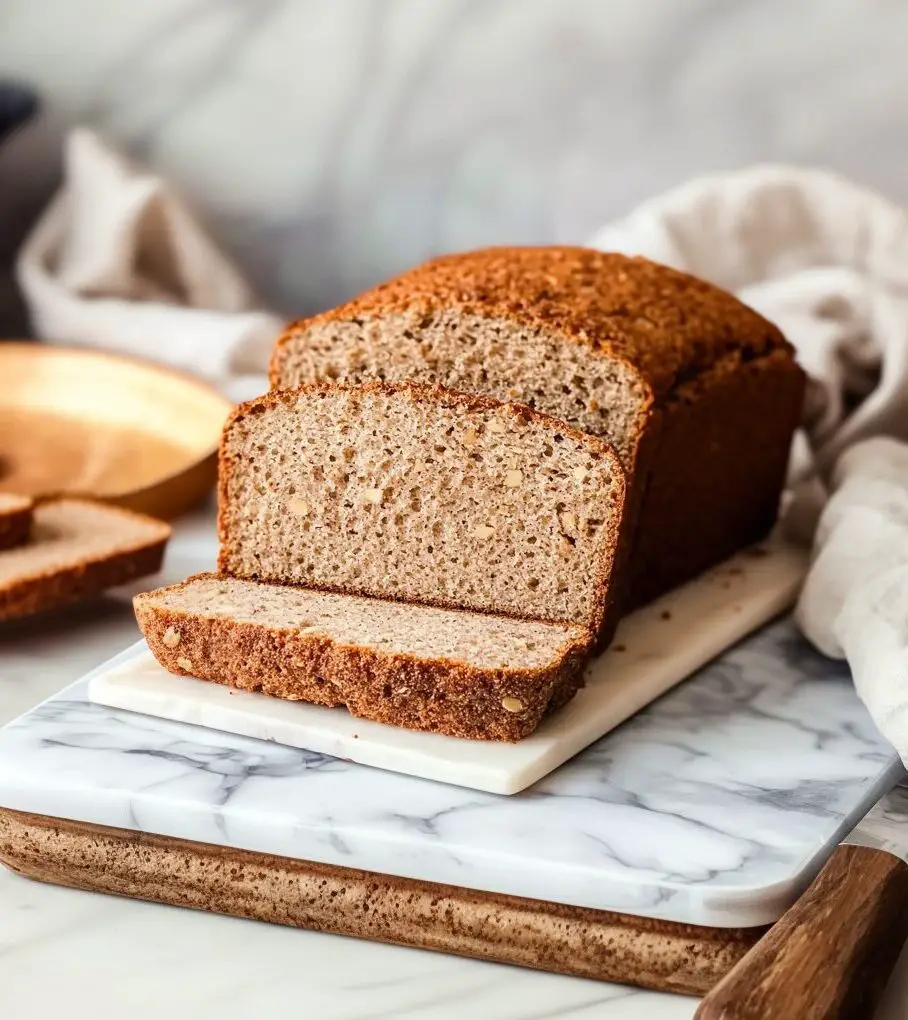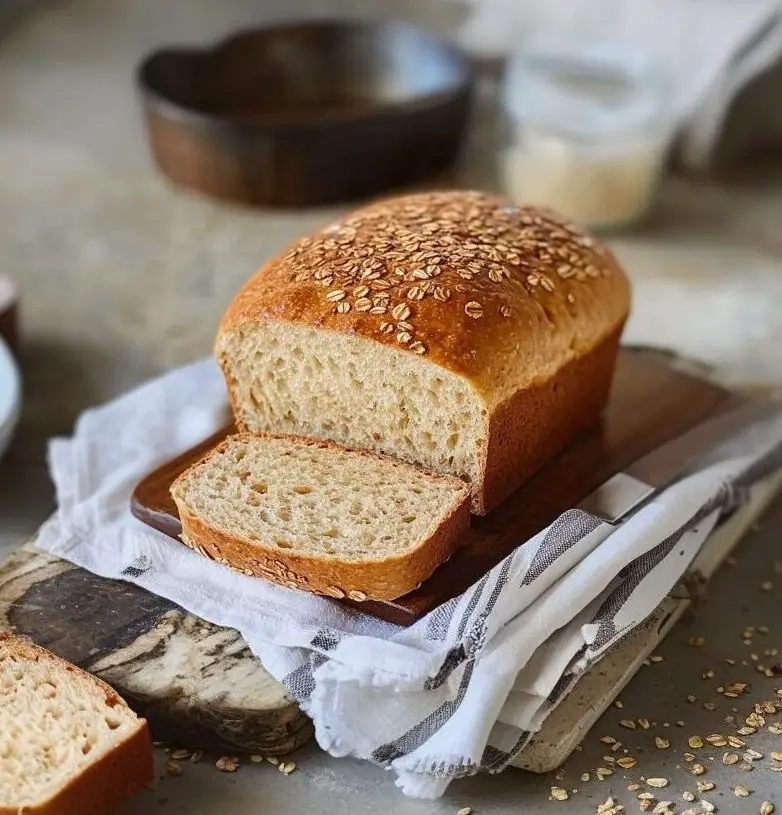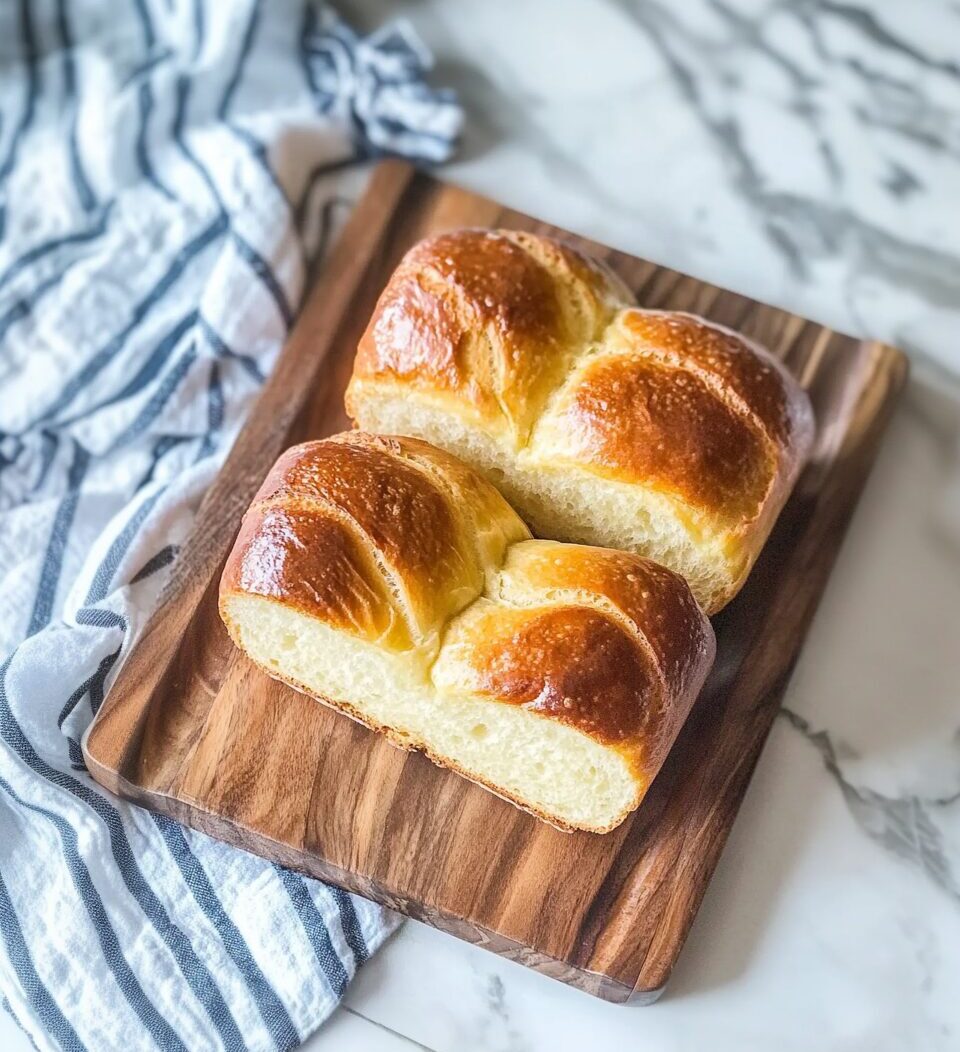This Low Carb Almond Flour Bread is a wholesome, grain-free alternative to traditional bread, perfect for those following keto, paleo, or gluten-free diets. With a chewy texture and crusty exterior, it closely resembles whole wheat bread, making it ideal for sandwiches, toast, or simply enjoyed on its own. The recipe is straightforward, requiring just a few ingredients, and delivers a satisfying loaf with only 2g net carbs per slice.
Full Recipe:
Ingredients
- Blanched almond flour
- Psyllium husk powder
- Baking powder
- Eggs
- Olive oil
- Warm water
- Sea salt
Directions
- Preheat your oven to 350°F (175°C).
- In a large bowl, mix the almond flour, psyllium husk powder, baking powder, and sea salt.
- Add the eggs, olive oil, and warm water to the dry ingredients. Mix until a thick batter forms.
- Transfer the batter to a lined loaf pan, smoothing the top with a spatula.
- Bake for about 60 minutes, or until the bread is firm and a toothpick inserted into the center comes out clean.
- Allow the bread to cool completely before slicing.
Nutrients
Per slice (based on 18 slices):
- Calories: 123
- Total Fat: 10g
- Saturated Fat: 1g
- Cholesterol: 31mg
- Sodium: 125mg
- Total Carbohydrates: 5g
- Dietary Fiber: 3g
- Net Carbohydrates: 2g
- Protein: 4g
The Benefits of Almond Flour in Baking
Almond flour, made from finely ground blanched almonds, is the main ingredient in this recipe. Unlike traditional wheat flour, almond flour is naturally gluten-free and has a significantly lower carbohydrate content. One of the biggest benefits of using almond flour in baking is that it is a great source of healthy fats, fiber, and protein. These nutrients contribute to the bread’s satisfying texture and help provide lasting energy throughout the day.
Almond flour is also a rich source of essential vitamins and minerals, including vitamin E, magnesium, and potassium. Vitamin E is a powerful antioxidant that helps protect the body from free radical damage, while magnesium is crucial for muscle function and heart health. Potassium helps regulate fluid balance and nerve function. By using almond flour, you are not only reducing your carbohydrate intake but also adding nutrient-dense foods to your diet.
Another advantage of almond flour is its ability to create a bread with a dense, yet moist texture. This is important for people who are used to the fluffiness of traditional wheat bread but want a lower-carb alternative. Almond flour bread is chewy and satisfying, making it a great option for people who crave the experience of eating real bread without the heavy carb load.
The Role of Psyllium Husk in Low-Carb Bread
Psyllium husk powder is another key ingredient in this recipe. This fiber-rich ingredient is made from the seeds of the Plantago plant and has a range of health benefits. When used in baking, psyllium husk helps improve the texture and structure of the bread, providing the elasticity that gluten would normally provide in traditional wheat bread. It also absorbs water and expands, giving the bread a soft and airy texture.
Psyllium husk is a soluble fiber, which means it dissolves in water and forms a gel-like substance. This gel helps to hold the bread together, making it easier to slice and enjoy. The high fiber content also helps with digestion and promotes gut health. Psyllium husk has been shown to help regulate bowel movements, lower cholesterol levels, and stabilize blood sugar, making it a great addition to any diet.
Additionally, psyllium husk is known for its ability to control appetite and aid in weight management. It does this by increasing feelings of fullness and reducing hunger cravings. By incorporating psyllium husk into your low-carb bread, you can enjoy a satisfying and filling meal without the need for high-carb options.
The Health Benefits of Low-Carb Almond Flour Bread
Low-Carb Almond Flour Bread offers a variety of health benefits that go beyond just being gluten-free and low in carbohydrates. Here are some of the key health benefits of incorporating this bread into your diet:
1. Supports Weight Loss: Since almond flour bread is low in carbohydrates and high in fiber, it helps keep you feeling fuller for longer. This can prevent overeating and help with weight management, making it an excellent choice for those following a ketogenic or low-carb diet.
2. Improves Blood Sugar Levels: Unlike traditional bread, which can cause spikes in blood sugar levels, almond flour bread has a low glycemic index. This means it won’t cause rapid increases in blood sugar and is a good option for those with diabetes or those looking to stabilize their blood sugar levels.
3. Rich in Healthy Fats: Almond flour is high in monounsaturated fats, which are beneficial for heart health. These healthy fats help reduce bad cholesterol levels and promote a healthy cardiovascular system. Including almond flour in your diet can help support overall heart health and reduce the risk of heart disease.
4. Boosts Digestive Health: The high fiber content in almond flour and psyllium husk helps support healthy digestion by promoting regular bowel movements. Fiber is essential for gut health, as it helps prevent constipation and supports the growth of beneficial gut bacteria.
5. Provides Sustained Energy: Unlike traditional bread, which can cause energy crashes due to its high carbohydrate content, low-carb almond flour bread provides a steady and sustained release of energy. The healthy fats and fiber in the bread help keep blood sugar levels stable, leading to more consistent energy throughout the day.
6. Supports Bone Health: Almond flour is a good source of magnesium, which plays a crucial role in maintaining healthy bones. Magnesium helps regulate calcium levels in the body, supporting bone density and strength. By incorporating almond flour into your diet, you can help promote long-term bone health.
How to Enjoy Low-Carb Almond Flour Bread
Low-Carb Almond Flour Bread is incredibly versatile and can be enjoyed in many ways. Here are a few ideas for how to incorporate this bread into your meals:
1. As a Sandwich: Use slices of almond flour bread as the base for your favorite sandwich. Whether you prefer a classic turkey and cheese sandwich or a veggie-filled option, this bread provides a hearty foundation without the carbs of traditional bread.
2. Toasted with Toppings: Toast a slice of almond flour bread and top it with your favorite spreads. Nut butter, avocado, or a simple drizzle of olive oil and sea salt all make great choices for a satisfying snack or breakfast.
3. With Soups and Stews: Almond flour bread makes an excellent accompaniment to soups and stews. Its dense texture helps soak up liquids, making it a perfect side dish for your favorite soup or chili.
4. As a Base for Bread Pudding or French Toast: You can even use almond flour bread as the base for low-carb bread pudding or French toast. Simply slice the bread, dip it in an egg mixture, and cook it as you would regular French toast for a delicious breakfast treat.
Conclusion: Why You Should Add Low-Carb Almond Flour Bread to Your Diet
Low-Carb Almond Flour Bread is a nutritious, gluten-free alternative to traditional bread that offers a variety of health benefits. Whether you’re following a low-carb, keto, or paleo diet, this bread is a perfect addition to your routine. It’s high in fiber, low in carbs, and provides a range of essential vitamins and minerals, making it a great option for those looking to improve their overall health and well-being.








